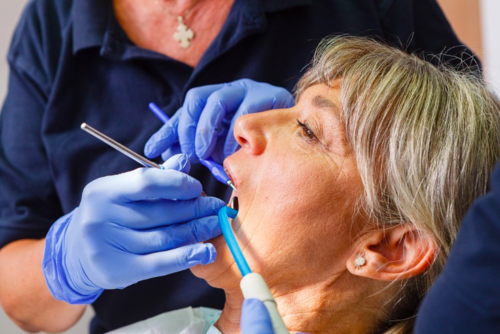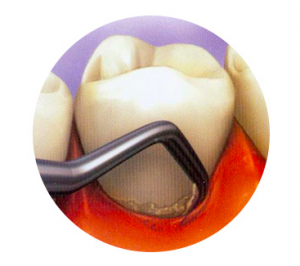Why Is Professional Teeth Cleaning Necessary?
During our daily lives, a thin layer called biofilm forms on our teeth, consisting of food residues, bacteria, and other substances. This biofilm is a soft layer that can be easily removed with proper home cleaning. However, if this biofilm is not removed, the substances dissolved in saliva solidify the biofilm, leading to the formation of tartar. Tartar formation is particularly pronounced in areas where large salivary gland ducts are located, such as on the outer surface of the molars on both sides above and below, and on the inner surface of the incisors facing the tongue. Tartar cannot be removed at home, so specialist (dental hygienist) assistance is necessary. Tartar formation allows for further biofilm formation, which can eventually lead to gingivitis, then periodontitis (gum disease), and even tooth loss over time. It’s essential to note that biofilm can also form on teeth replaced with implants if they are not adequately cleaned.
How Does Professional Teeth Cleaning Work?
The most important tool for a dental hygienist is the ultrasonic scaler. This is a metal tool that vibrates at a high frequency, allowing the dental hygienist to loosen and remove tartar and biofilm from the surface of the teeth. If tartar is located in a very stubborn or hard-to-reach area, manual instruments may also be necessary. A special dental sandblasting device developed for dental use can be used to remove various discolorations (from smoking, coffee, tea, red wine, etc.). Finally, the dental hygienist polishes the surface of the teeth with a polishing brush, rubber cup, and polishing paste, removing any remaining roughness.
Why Is Regular Professional Teeth Cleaning Important?
It is generally advisable to undergo professional teeth cleaning every six months. This is because, on average, enough tartar forms during this time that it is worth removing. However, if any periodontal disease occurs, the doctor may recommend three or even four cleanings per year based on individual risk assessment to maintain inflammation-free conditions.
How Can Tartar Formation Be Prevented?
Learning the proper tooth brushing technique can prevent plaque and tartar formation. It’s important to customize tooth brushing since each set of teeth has individual characteristics. It is essential to use additional tools alongside a toothbrush – such as interdental brushes or dental floss – as necessary. If you or the dental hygienist feel that your home cleaning is not effective enough, you may need to attend personalized tooth brushing training. By mastering the correct tooth brushing technique, even an annual dental check-up may be sufficient!





